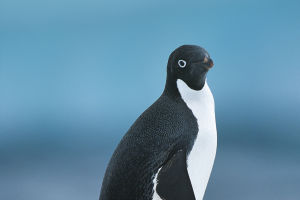Kangaroos have heads similar to, but larger than, rabbits' heads, and jump upright on their hind feet. Kangaroos are long jump champions among mammals, and their natural long jump ability is extremely developed.
The kangaroo's fur is divided into two colors. Many male kangaroos have reddish-brown fur, while females have grey fur and are smaller than males. Kangaroos live in short, green grasses close to the ground and like to eat long grass and hay. Individual species of kangaroos also eat leaves or small tree buds.
Kangaroos are mostly nocturnal, usually coming out for food a few hours after the sun goes down and returning to their nests shortly after the sun comes out. But some kangaroos are active in the early morning or early evening. Different species of kangaroos like to live in a variety of different natural environments. Kangaroos like to use trees, burrows and rock crevices as shelter to keep themselves and their families safe.
The mother kangaroo will have a small pouch on her abdomen that will hold the baby kangaroo. Newborn wallabies are very thin and must live in their mother's pouch. When the wallaby is four months old, it is very beautiful with uniform hair, dark gray back and light gray belly. Sometimes, at five months old, the wallaby sticks its head out and the female pushes her head down. As the wallaby grows, it will become more and more mischievous. It lowered its head, stretched its legs, and sometimes dragged its little tail out of the pocket.
Wallabies grow out of pouches for seven months before starting to move out of pouches. But when it is startled, it will quickly return to the bag. At this time, the baby care bag has also become like a rubber bag, which is very elastic and can be opened and closed, and it is very convenient for the kangaroo to enter and exit. In general, wallabies need to spend three or four years in their mother's pouch to mature. The physical strength of an adult kangaroo has reached its peak, and its strong tail is its protective tool.


